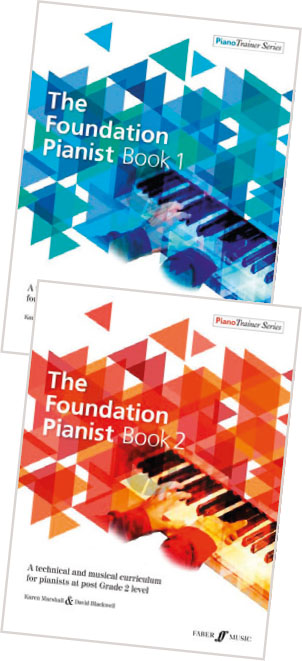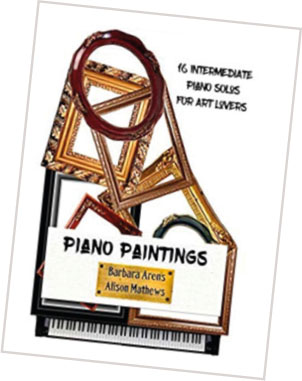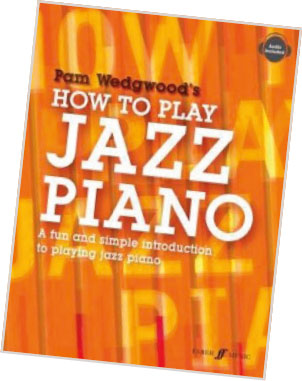
Get Set! Piano Christmas Crackers
Karen Marshall and David Blackwell
Collins Music
I have a few treasured and very dog-eared Christmas music books for myself and my pupils. This bumper offering – over 30 carols for the beginner to Grade 2 level pianist – is about to join that collection. MT contributor Karen Marshall and David Blackwell have included all the favourites: ‘Jingle Bells’, ‘Silent Night’, ‘Ding Dong’ and so on, and a few gems from around the world: ‘Cantemos a María’ (from the Dominican republic), and ‘Huron Carol’ (Canadian traditional), among others. Each one has brief helpful teaching notes, and there are ‘fun facts’, practice activities, plus aural, theory and composing tasks. The first few pieces are for separate hands, with some piano accompaniments that are guaranteed to make your beginner pianists sound amazing. Hands-together pieces then move seamlessly to Grade 2 standard: in effect, this book has approximately a three-year shelf-life for students. Collins has also provided extra online resources: more carols, certificates, quizzes, a teacher's guide, and an advent calendar to help motivate pupils to play daily.
The Foundation Pianist, Books 1 and 2: A technical and musical curriculum for pianists at post Grade 1 or 2 level
Karen Marshall and David Blackwell
Faber

The Foundation Pianist is a set of two books for students beyond the beginner stage, aimed at those who want to develop a technical and musical foundation to help them progress on to intermediate levels. Book 1 is suitable for post-Grade 1 level and Book 2 is suitable for post-Grade 2 level. They are not ‘tutor books’ as such, but both anthologies provide an excellent, thorough and highly enjoyable technical and musical curriculum for their target levels. There are pieces and arrangements (Türk, Gurlitt, Rebikov, Schubert, Bartók, Bach, Mozart, and so on, as well as traditional music and pieces by the authors themselves), daily workouts (exercises), sight-reading, repertoire, a vast collection of musical training activities, and facts about the musical time periods. It is like having Marshall (an expert teacher) and Blackwell (an award-winning composer and arranger) at your elbow as you teach.
Piano Paintings: 16 Intermediate Piano Solos for Art Lovers
Barbara Arens and Alison Matthews
Editions Rensakov

You wait a lifetime for intermediate piano pieces influenced by artwork and then two books come along at once (Pam Wedgwood's was published last year).
This collection of 16 pieces is for the late intermediate pianist – Grades 4 to 6 – and draws on the composers’ love of art. The cover is not too inviting, but inside there are some very helpful introductory notes and three of the paintings that inspired the pieces. I would definitely recommend going online and viewing all the art works (including Constable, Klimt, Matisse and Chagall) alongside beautiful recordings of the pieces by the composers. Barbara Arens and Alison Matthews have aimed to express through music the colours, movement and emotions evoked by the artists. Teenage pupils with imagination will particularly enjoy exploring both the art and the music.
How To Play Jazz Piano
Pam Wedgwood
Faber

This book does what it says on the cover, and does it with clarity, style and immense skill. There is a logical progression of 15 sessions that explain the fundamental elements of jazz, covering: understanding syncopated rhythms, how to swing, playing from memory, understanding basic chords and chord symbols, playing in different popular styles, scales and modes used in jazz, the beginnings of improvisation, and suggested listening to provide inspiration. There are also online resources available via a QR code or directly from the Faber website. I tried out some of the sessions with one of my pupils who loves jazzy pieces, but the thought of playing jazz with its different chords, blank bars and modes filled her with horror. We found that this book led us through all these potential pitfalls comfortably and most enjoyably. She got carried away and went leaping ahead – we then practised what we had learned about syncopation and swing on her Burgmüller piece! I can see this book becoming a classic ‘how to’ book, being tremendously helpful for GCSE music, teachers who want to teach the ABRSM jazz exams, and for all pianists. I am delighted to say that Pam Wedgwood has done it again.




